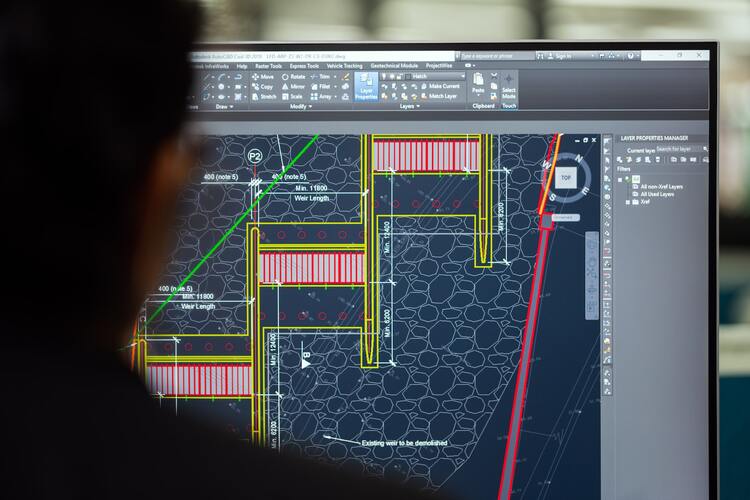Embedded Software Development Technologies
Embedded technologies are gaining momentum across various domains. All sectors — from medicine, education, government, and hospitality to logistics and manufacturing — can benefit from utilizing advanced embedded systems. The innovations in these spheres can make engineers’ work more cost-effective, safe, productive, and efficient. In this article, we will consider the popular embedded software development technologies and dwell on their most important characteristics. Continue reading to learn more about them and their implementation across various domains.
Popular Embedded Technologies
Internet of Things
Being an integral part of any IoT-based system, embedded technologies are indispensable for IoT gadgets. With the help of such systems, users’ life and productivity is significantly enhanced. For instance, let’s consider various ways of implementing embedded technologies in IoT.
A great example is a so-called smart home, where all gadgets are interconnected via the network, and the users can manage them easily even in a remote mode. If you are not present at home, and the need arises to water your plants, you can manage to do it with the help of smart gadgets. What is more, it is possible to create a specific watering schedule regime and adjust lighting and humidity levels if necessary.
There are advanced security systems that can protect the apartment from unauthorized access and send notifications to homeowners in real-time. Lightweight fitness trackers and smartwatches can effectively monitor the steps per day, current heart rate, and the most prevalent sleep pattern. In the defense sector, such gadgets can be utilized for spying objectives due to their small compact nature and versatile functionality.
Self-driving cars are able to create maps of their environment, observe the physical position of other cars nearby, identify traffic lights, understand road signs, and pay attention to the pedestrians in the vicinity. With the help of almost omnipotent industrial robots, manufacturers can cut expenditures on manual labor, reduce the cost of human error and make the production process safer and quicker.
Machine Learning and Artificial Intelligence
ML and AI technologies are widespread in many domains. For example, among artists and photographers, AI-based photo editing tools have become really popular. With the help of such tools, it is possible to edit the photos and enrich the pictures with sophisticated visual effects. ML tools can help in advanced image recognition, which is especially beneficial for the healthcare sector, as it can help in identifying cancer at its early stages and prevent it from further growth.
Smart voice assistants use ML and AI techniques for voice search and appliance management. In industrial manufacturing, ML tools help predict the malfunctioning of the machinery and prevent it from breakdown. Such predictive analytics tools can analyze the current state of the gadgets regarding their temperature, humidity, and other environmental conditions, and send signals to the users’ smartphones in real time so that they can make proper decisions and adjust the functioning of the gadgets accordingly.
For example, it may be advised to change the definite parts of the system, fix what is broken, introduce the necessary adjustments, or reinstall the whole system for the sake of more stable functioning and safer performance.
Blockchain Technology
Blockchain technologies empower embedded software development company to share blockchain information among the interconnected set of gadgets that stay in contact with each other. This groundbreaking technology allows doing so even without a central network, which is amazing. Currently, the majority of embedded IoT devices are connected via a central point, which makes them extremely vulnerable to malicious cyber attackers.
Blockchain technologies offer multiple benefits for embedded systems. Firstly, they are significantly better protected and offer greater security. Then, due to the absence of a single central point, such systems provide better automation as gadgets can communicate with each other directly and more efficiently. One more advantage is the increased reliability, as there are fewer chances of failure of the system.
Besides, these systems offer outstanding cost-efficiency, as there is no need for large data centers due to the more straightforward approach to communication. So long as there are fewer failures, the costs for maintenance and support are decreased as well, making this technology a great money-efficient solution for companies of all sizes and domains.
Best Practices for Embedded Development
Design Considerations
First and foremost, it is important to look out for a well-planned design of the embedded systems. Proper planning and design are the prerequisites of long-term success in embedded Linux device driver development. In order to achieve the best results, it is important to evaluate the customer requirements and the peculiarities of the definite project, such as budgeting and scalability. Besides, it’s vital to pay attention to the involved team of experts who work on the project realization. Their profound experience and rich skill set will be a recipe for success.
Continuous CI/CD
Continuous integration, delivery, and deployment are the stepping stones for improved quality of the end product. This approach allows engineers to release top-notch, high-quality software more frequently. Thanks to CI/CD, it is possible to identify and eliminate any issues before they can have an adverse effect on the quality of the end product. Consequently, it helps minimize the time and monetary resources devoted to bug fixing, which leads to faster delivery and increased customer satisfaction as the result.
Testing
Quality assurance is extremely important at all stages of SDLC. This step can assist the engineers in identifying glitches and tech problems early and solving all the issues. Testing helps meet all the pre-defined standards of quality and ensures that the systems have high stability and reliability.
Importance of Code Quality
It is hard to overestimate the meaning of high-quality code. Engineers should create the code according to international best practices and make sure that it is easy to maintain and understand. You should also review it regularly to enhance the coding and suggest the necessary adjustments.
Thorough Documentation
Although some people do not always pay close attention to the importance of well-structured documentation, it is critical for embedded networks. It helps understand the system and how it functions in general, its integral elements, and the principles of work. Besides, it is of great help when the team decides to solve the technical issues that arise. Each step of the process, starting from the design to verification, needs to be properly documented to ensure the best quality possible.
The Bright Future of Embedded Technologies
The future of embedded technologies is to be bright. With so much potential and popularity across various domains, no wonder they have won the hearts of users from all over the world. Embedded technologies along with IoT and artificial intelligence will shape the future of tech development in almost all spheres of human life, making our lives safer and more convenient.







